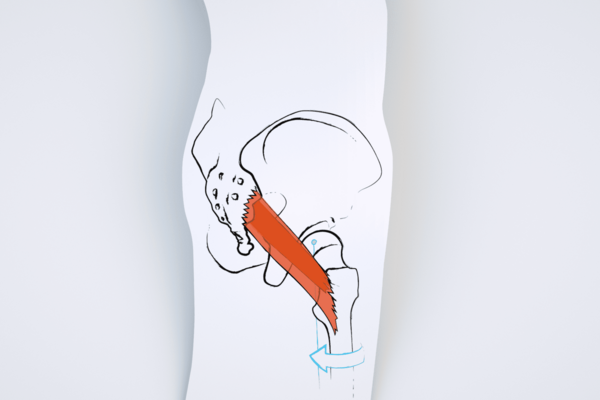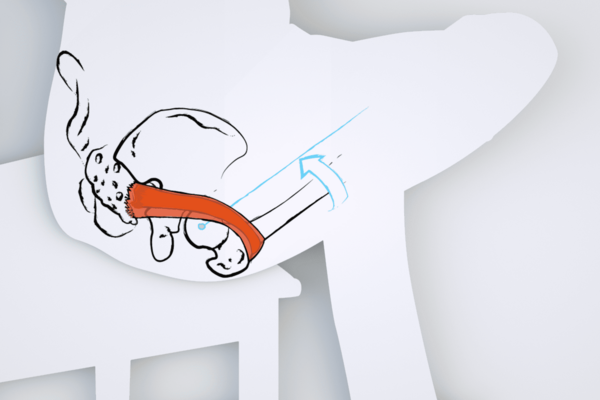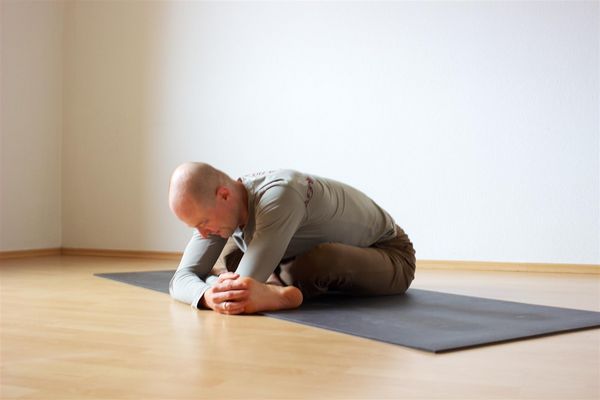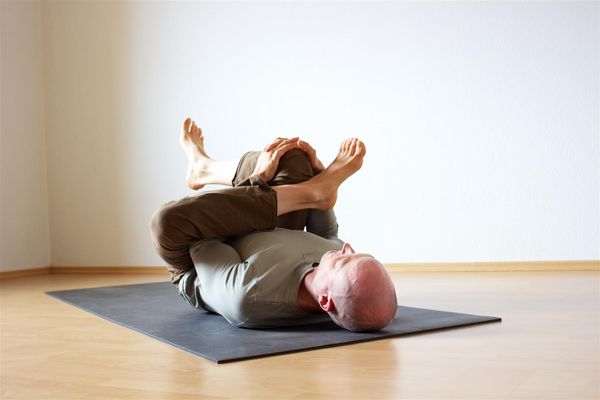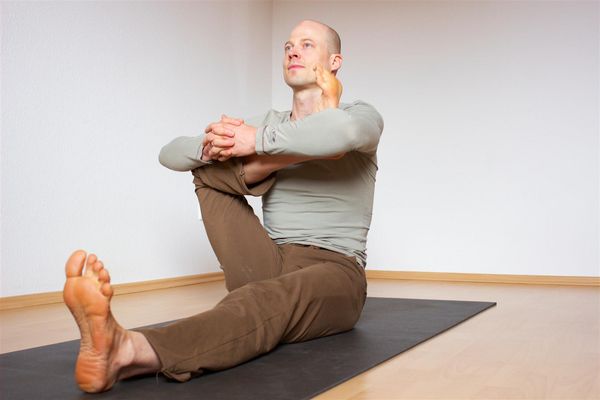
At the back of the pelvis, between sacrum and thigh bone (femur), there are only two muscles which directly connect these two bones. One of them, the pear-shaped muscle (musculus piriformis) originates at the inside of the sacrum and runs to the outside of the greater trochanter (trochanter major) at the thigh bone. The other one originates at the outside of the sacrum and likewise runs in the direction of the trochanter major. This muscle is the lowest part of the gluteus maximus (musculus glutaeus maximus – pars infimus).
In a standing position
In order to explore the function of both muscles, get into a standing position and touch your right buttock with your right hand with the fingertips in contact with the lower end of your coccyx (os coccygis). Now rotate your right leg outwards from the hip joint as if trying to wipe the floor outwards with your toes. You will now feel the contraction of the glutaeus maximus – pars infimus under your fingers. The piriformis is located a bit deeper and runs in the same direction.
Precisely this function, i.e. external rotation, is listed in any anatomy textbook for both muscles. The function results from their location: in a standing position, the two muscles are behind the rotation axis running through the thigh. On contraction, the muscles shorten and thus rotate the thigh outwards.
Now repeat a similar experiment, this time in a sitting position, though - you will realise something surprising. Sit on a chair and place your right ankle onto your left thigh with the ankle close to the left knee. In this position, lifting the ankle and lowering the knee equals an external rotation. You will notice that this movement causes no contraction whatsoever under your fingers. If you, however, firmly push your right ankle against your left thigh, both the glutaeus maximus – pars infimus and the piriformis underneath it become active immediately. A stunning phenomenon which you will fail to find in most anatomy textbooks. With a bent hip joint, both muscles change their function completely and become internal rotators. In yoga practice, this fact is of decisive significance.
In a sitting position
Between the sacrum and the greater trochanter at the thigh (trochanter major), the pelvis is located, or, to be more precise, the part which is referred to as the seat bone (os ischii). In a flexion, both muscles are directed around an edge of this bone. They are now positioned above the rotation axis running through the thigh. If they now shorten due to a contraction, they cause an inward rotation of the thigh.
In everyday life
Both piriformis and glutaeus maximus – pars infimus tend to tense up under stress - "working one's butt of" as they say. If the muscles tense up chronically, they shorten. As a result, starting from the pelvis, the entire leg rotates outwards. This can cause a disadvantageous twist and load of the knee joint. When we sit down on the floor, the high tone of these muscles prevents the knees from easily sinking down to the sides. If we then over-ambitiously try to get our knees into the lotus seat (padmasana) the knee has to compensate the lack of flexibility in the hip joint. An injury of the knee joint may be the result. A relaxed, loose piriformis and glutaeus maximus – pars infimus are therefore essential for healthy knees.
Either sit down in an open cross-legged position and smoothly let yourself sink down to the front (Svastikasana) or get into one of the other so-called 'hip-opening' positions shown in the pictures. In doing so, you can effectively stretch the piriformis and glutaeus maximus – pars infimus. On first sight, you increase your flexibility and prepare for the lotus seat without overstraining your knee joint. On second sight, though, with the relaxation of your muscles, you also release the underlying deep-seated stress. Which is also the reason why those 'hip-opening' exercises often have such an emotionally liberating effect. Uh-huh! //
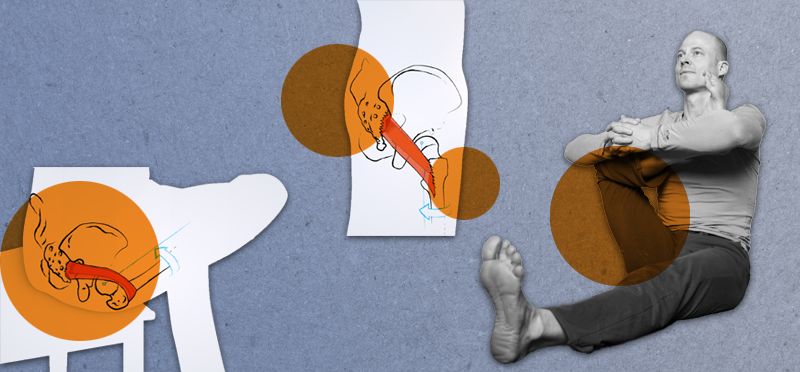

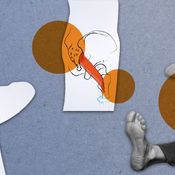
 Dr. Ronald Steiner
Dr. Ronald Steiner
![Yoga Journal | Heft 29 | 09/2013 What precisely is being stretched here? [New series]](/fileadmin/_processed_/d/1/csm_YJ_001_cover_lowres_37087f5c26.gif)
